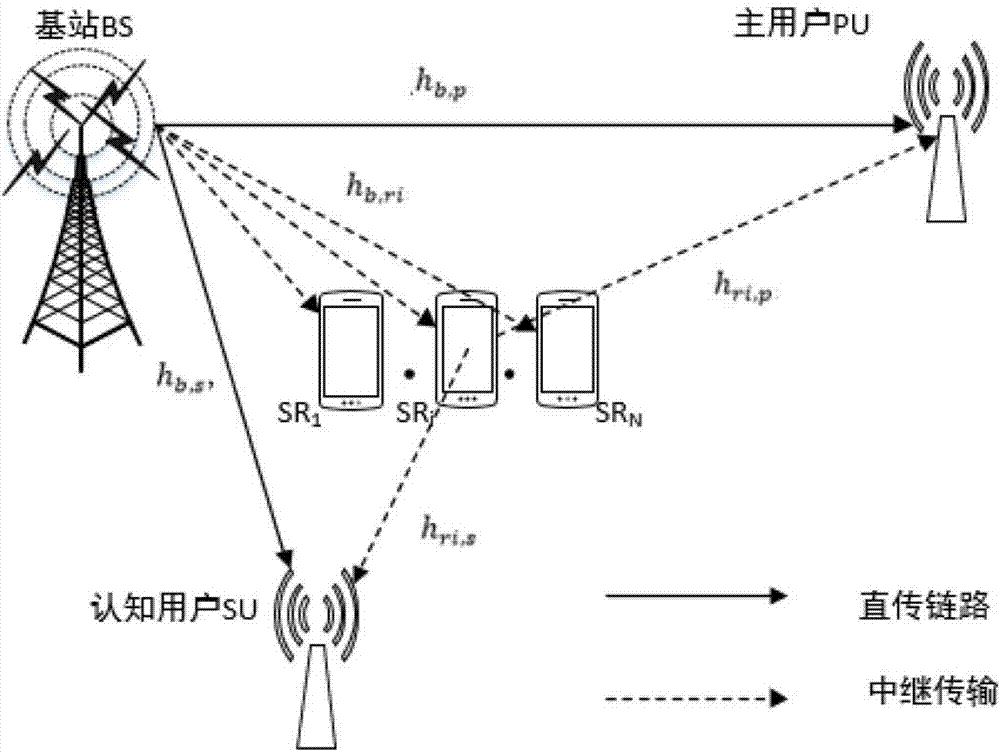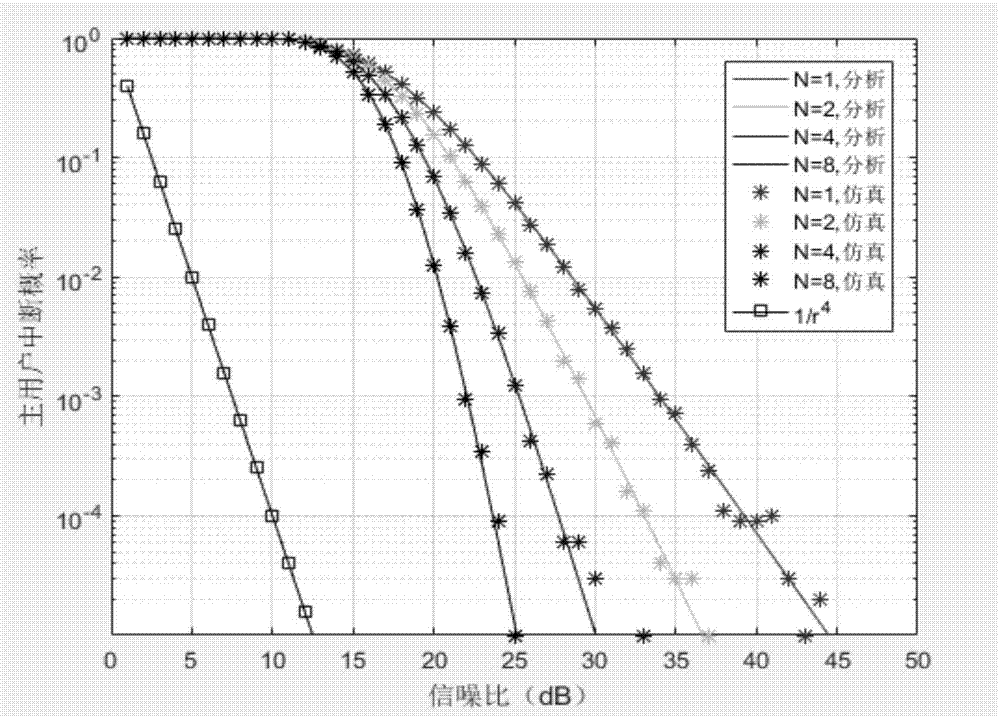Energy-carried cooperative CR-NOMA cooperative mode and relay selection algorithm
A CR-NOMA, collaborative mode technology, applied in the field of communication, which can solve problems such as poor performance
- Summary
- Abstract
- Description
- Claims
- Application Information
AI Technical Summary
Problems solved by technology
Method used
Image
Examples
Embodiment Construction
[0061] Such as figure 1 As shown, a NOMA cooperation mode and relay selection algorithm of a cooperative cognitive network with energy, is characterized in that,
[0062] Includes data transfer and data decoding, where:
[0063] S11, the first stage of data transmission: the base station BS broadcasts the data to be sent to all mobile terminals
[0064] S12. The second stage of data transmission, including:
[0065] First case: If the primary user PU can receive the data correctly in the first stage, it will broadcast the ACK frame, if the node SRs correctly decodes the primary user and secondary user data in the first stage, it will broadcast the SR-ACK frame, if the base station BS receives the ACK frame and SR-ACK frame, then selects a best relay from the node SRs, and relays the information to the secondary user;
[0066] The second case: if the primary user receives data incorrectly in the first stage, it will feed back a NACK frame, and if the node SRs cannot correctl...
PUM
 Login to View More
Login to View More Abstract
Description
Claims
Application Information
 Login to View More
Login to View More - R&D
- Intellectual Property
- Life Sciences
- Materials
- Tech Scout
- Unparalleled Data Quality
- Higher Quality Content
- 60% Fewer Hallucinations
Browse by: Latest US Patents, China's latest patents, Technical Efficacy Thesaurus, Application Domain, Technology Topic, Popular Technical Reports.
© 2025 PatSnap. All rights reserved.Legal|Privacy policy|Modern Slavery Act Transparency Statement|Sitemap|About US| Contact US: help@patsnap.com



